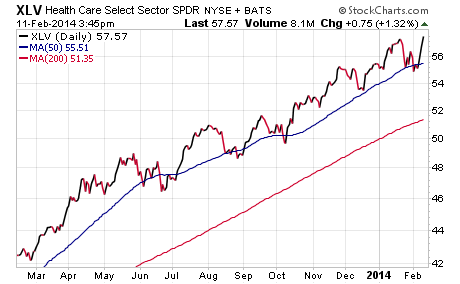Sector ETFs 5 Ways to Use Them in Your Portfolio
Post on: 30 Март, 2015 No Comment

A quick look at Googles stock screener reveals there are nearly 8,200 publicly-traded stocks and ETFs, far more than most people could ever care to study and understand. One of the leading fund companies, iShares, says there are just over 60 investable sectors, a number that is much more manageable.
The rise of sector ETFs has made it possible for investors to pick and choose sectors without the complexity and difficulty of understanding individual companies. If you have a hunch on oil and cant pick between a company like Exxon Mobil (XOM) or EOG Resources (EOG), you can just bet on an oil sector ETF and own a part of every company in the industry.
5 Ways to Use Sector ETFs In Your Portfolio
That kind of flexibility from ETFs has given way to new ways of investing and portfolio building. Here are a few ways you might use sector ETFs in your own portfolio:

- Hedging Budgetary Risks – Sector ETFs give investors the chance to hedge against some risks in their personal budgets. For example, you might choose to hedge gas prices by buying more oil stocks through a fund like the iShares Dow Jones U.S. Energy Sector (IYE), which holds several different oil companies. If gas prices go up at the pump, youll pay more to fuel your car, but youll also record profits from rising stock prices for oil producers.
- Blending a Portfolio – The S&P 500 index is a favorite with passive investors. The index is built to include the largest and most liquid stocks in a portfolio that mimics the output of the American economy. All in, the S&P 500 is very representative of the growth or contraction in corporate profits in the United States. But what if you want a different blend? Sector funds can work really well as an “add-on” for exposure to industries that you want more of in your portfolio. For example, telecom stocks make up less than 3% of the S&P 500 index, but as a whole the industry is a very safe and consistent dividend paying sector. Investors can “top up” their exposure by moving a small part of their portfolio to a pureplay sector ETF to add more telecoms while diluting other sectors in their portfolios.
- Creating Income – Dividend funds are not the only way to amp up your cash returns from dividends. You can use sector funds to target industries that are known to pay out high dividends like utility stocks. REITs, mortgage REITs. or consumer staples funds. These offer high consistent dividends and unlike broad dividend funds, they give you the option to pick and choose the industries that you feel most comfortable with. The risks in REITs are very different from the risks to utilities, for example, even if the dividend yields are not all that different.
- Large Scale Speculation – Have a hunch that home building is going to pick up or gold prices will explode? Buying a whole sector through an ETF is a great way to capitalize on very short-term changes to an industry or sector without exposing yourself to single stock risks. You can also take advantage of leveraged ETFs or inverse ETFs to really take advantage of market movements.
- Adding or Removing Market Risk – High beta portfolios do better in rising markets and worse in falling markets. One can increase their exposure to beta by adding one or many sector specific ETFs in volatile industries. Think speculative and sentiment driven industries like technology, consumer discretionary, leveraged financials and materials stocks. Those who want to add more or less short term exposure to the market can do so easily with high beta sector ETFs.
At first, sector ETFs seem to be a far too concentrated investment vehicle designed solely for industry-specific speculation, but their usefulness goes well beyond simple binary bets on a single sector. Consider using a sector ETF to hedge risks in your own budget or improve the dividend yield of your portfolio by adding sectors that income investors love. Theres more than meets the eye with these very versatile investments.
Do you take advantage of sector ETFs in your portfolio?














